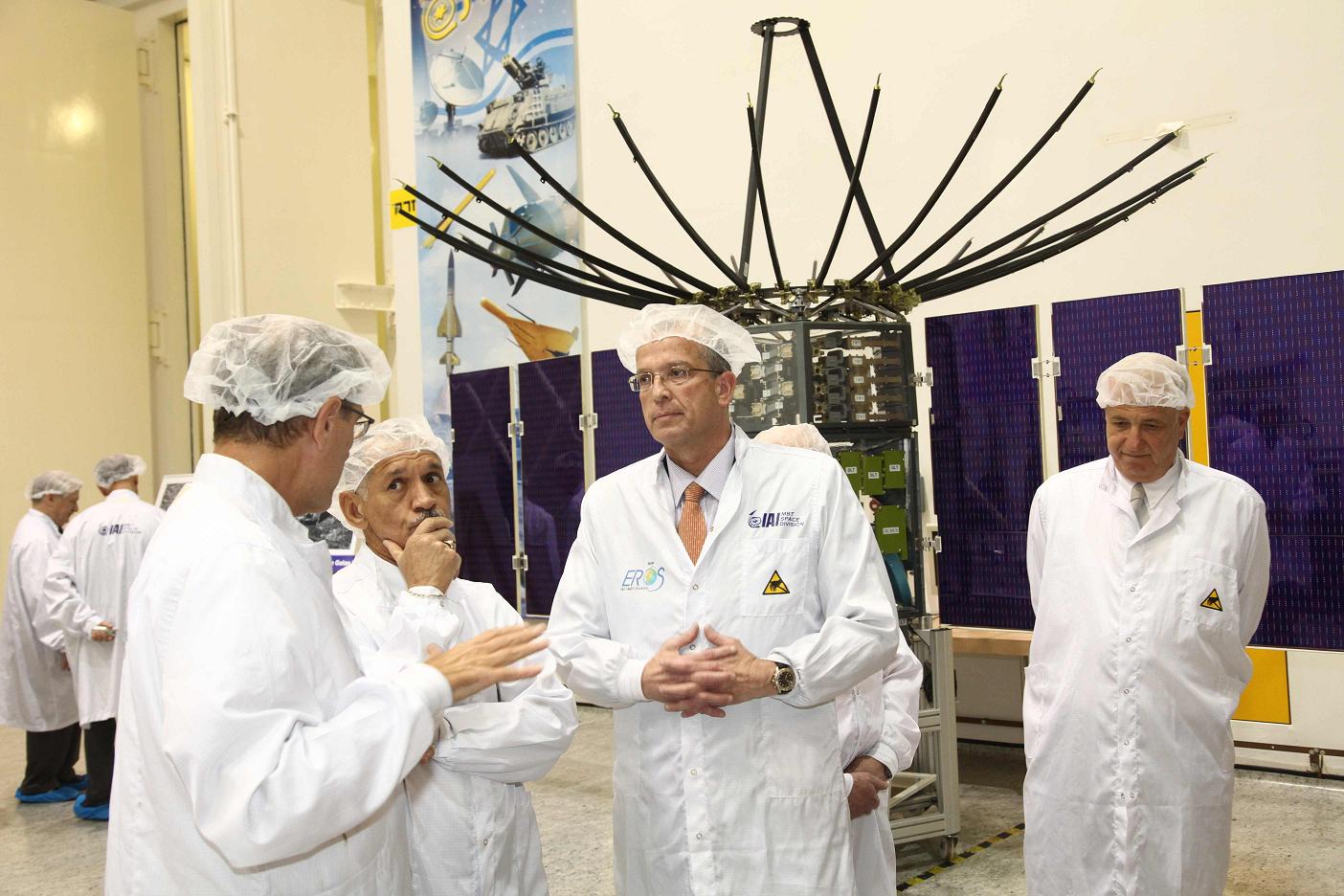The exhibition will take place today as part of the second day of the 5th Ilan Ramon International Space Conference in Herzliya

The conference offers meeting opportunities for senior scientists, managers and senior officers in the fields of space and aviation from Israel and the world. At the same time as the two-day conference (27/28-1/2010), the TAA presents models of various systems: the TecSAR satellite (TecSAR) in real size, the demos (the products of the satellite), a nano-satellite (satellite weighing up to 10 kg ), satellite mission planning station, satellite control and control station (Shubal) Amos 3, as well as stabilized electro-optical probes.
Jeff Sneller from Northrop Grumman in the USA gave a lecture on the collaboration between his company and the aerospace industry based on "Texar" satellite technologies. The cooperation between the companies is intended for the use of the US Department of Defense, and for scientific purposes. The Texar satellite, which has been launched for two years this month, is the most advanced SAR imaging satellite of its kind in the world. The satellite system consisting of the satellite and the advanced ground station, also produced by the Israel Defense Forces, allow the processing of radar signals of various objects into an image similar to a normal optical image.
The Texar satellite is the smallest SAR satellite of its kind in the world. Its dimensions allow its operation also as a tactical satellite, as a candidate for the Responsive Space mission, and enable its launch from small and cheap launchers. The satellite weighs only about 300 kg, in contrast to the other satellites whose weight is from 800 kg onwards.
Giora Iran, head of the "Amos 4" program at the space plant of the Space and Missile Systems Division of the Aerospace Industry, will speak today (January 28.1.2010, 4) about "Amos 2012" an advanced communication satellite. The satellite will be launched into space in the third quarter of 12 and will be delivered to the customer, the Space-Communications Company, after the end of the in-orbit testing phase. The lifetime of the satellite is planned to be about XNUMX years.
"Amos 4" is the most advanced satellite of its kind in the world, which includes an innovative platform and a unique ATAD (dedicated payload) that are at the forefront of technology. The satellite includes a modular platform and was designed to respond to satellites in the 2.5-4.5 ton range, which enables marketing flexibility in the main market of communication satellites. The telecommunications agency provides services in the areas Ka and Ku. The satellite weighs 4.2 tons
In addition to the modularity of the platform, "Amos 4" offers the customer a higher than usual cost-benefit ratio due to an optimal platform weight that allows loading more MTED components or, alternatively, more fuel, thus improving the return on investment. The satellite includes a complete redundancy of its systems in order to ensure the continuity of the service for the life of the satellite.
"In building the satellite, we made maximum use of the technological and engineering knowledge, ability, and experience acquired during the years when IAI is a leading manufacturer of communication satellites and photography satellites and serves as a national center of knowledge in the field of space," says Giora Iran.
The satellite includes 10 antennas. In terms of a commercial satellite, this is an unprecedented number. All the antennas are moved (swathed) independently so that after placing the satellite in its position in the sky, at the point 65 East, the continents of Africa, Asia and Europe will be fully covered by the satellite beams. Of the 10 antennas, one is an MBA multi-beam antenna and 2 other antennas are dual (Dual Band) broadband antennas, intended for both transmission and reception in both frequency ranges. The "Amos 4" satellite incorporates a unique systemic solution to the complex problem of continuity and stability of the pencil beam coverage of the MBA antenna. The solution includes elements
Innovative both in the ground station and in the satellite itself. The pallet enables efficient and immediate handling of particularly large film widths according to control from the ground station and in accordance with changing customer requirements. The extremely high flexibility of the Hemet operation gives the client clear marketing advantages.
Another element of technological innovation that exists in "Amos 4" is the systematicity offered by the ground system which enables automatic control and control of the satellite and in addition the operation of a satellite in a multi-layered architecture, which enables the distribution of resources and independent control of each service provider that is assigned a part of the satellite so that each A service provider can plan from its own dedicated position the required services and independently and privately control its resources. Each antenna is assigned to the relevant service area under the control of the service provider and can be tilted in a way that enables global geographic access, to maximize coverage and performance.
In addition to the management of the resources from the ground system, it is also possible to monitor the services and carry out a closed-loop dynamic control of their quality proactively.
In conclusion, Giora Iran says, "The development of the communication satellite "Amos 4" created a responsive satellite system with mission flexibility and dynamism that was built from a deep understanding of the customer's needs and maximum utilization of the engineering capabilities that exist in the field of space. Among other things, young and talented engineers took part in the project alongside veteran and experienced ones who, in a unique teamwork, produced groundbreaking thinking, innovation, originality and creativity."

One response
I did not understand anything. For example, what is a responsive satellite system, what flexibility is involved and what is dynamic there. What is multi-tier architecture? What is a multi-beam or dual antenna and what is a tape array. What is he actually doing this satellite is busy.